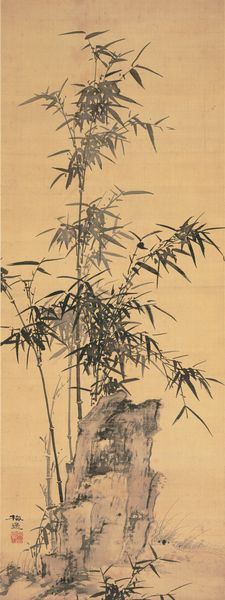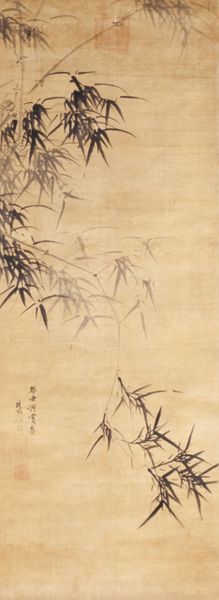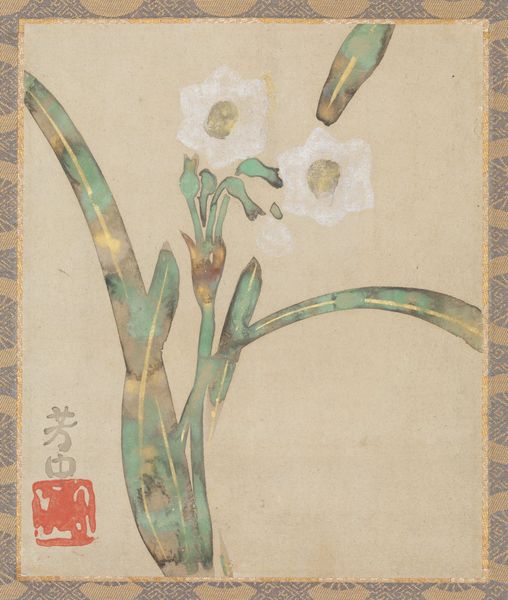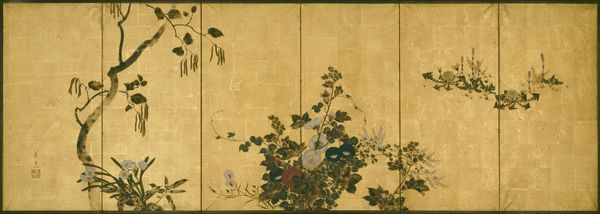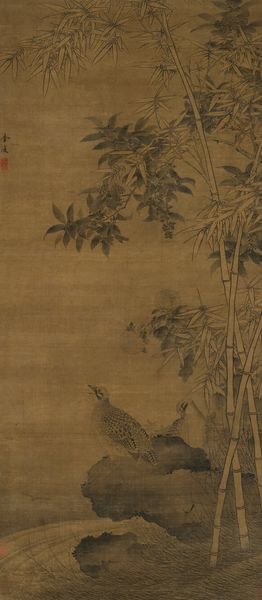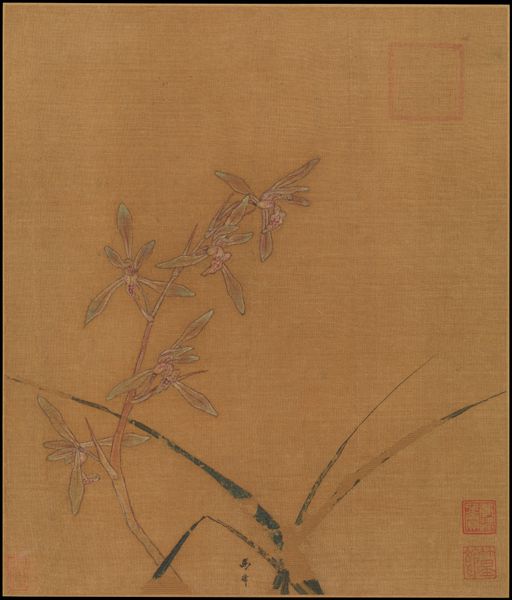
painting, watercolor, ink
#
painting
#
asian-art
#
landscape
#
ukiyo-e
#
figuration
#
watercolor
#
ink
#
watercolor
#
realism
Dimensions: 32 3/8 × 14 7/8 in. (82.23 × 37.78 cm) (image)63 7/8 × 18 7/8 in. (162.24 × 47.94 cm) (mount, without roller)
Copyright: Public Domain
Curator: Immediately striking, isn't it? The intimacy, the quietude... Editor: Very much so. A serene sort of scene. But before we get too far, could you perhaps introduce our listeners to what exactly we're looking at? Curator: Certainly. What we have here is a painting entitled "Sparrows and Bamboo", rendered with ink and watercolor, originating around the early 18th century. The artist credited with its creation is Ohara Keizan. Editor: Keizan… Well, it definitely aligns with certain visual traditions. The minimalist composition, the subjects. The piece has a charming simplicity. How do we typically understand works such as this one within the cultural milieu of its time? Curator: Within its cultural moment, the piece operates as an example of ukiyo-e tradition that has been linked with both realism and landscape painting, though it appears to possess elements of both schools of thought. Both bamboo and sparrows appear with notable frequency throughout East Asian art. Sparrow represents many things, but vitality, contentment, and unassuming joy figure heavily. Bamboo, of course, implies resilience, and nobility of spirit. Editor: Do you think that nobility is still perceptible to us now? How much has our distance from the original cultural contexts changed its meaning for contemporary viewers? Curator: It has inevitably been altered, yes. Our reception of its symbolic potential comes colored by time, perhaps flattened and simplified to key signifiers of what we interpret "Asian-ness" to represent in our modern moment. I imagine an 18th century Japanese audience brought a richness of social and symbolic understanding unavailable to most museum-goers today. Editor: The politics of presentation also shift these readings. Displaying this piece within an institution like the Minneapolis Institute of Art creates a very different context than its initial reception, inevitably changing its social function and impact. We transform something potentially devotional into an aesthetic object. Curator: Exactly, and that impacts how viewers encounter it. But the symbolic roots persist beneath the surface. Consider, even, the ways bamboo stalks continue to feature prominently in design, in landscaping. There is continuity of image, if not cultural practice. Editor: Agreed. And what endures also has to do with the universal appeal—that inherent quietude we touched on earlier. I imagine regardless of background, viewers find some measure of tranquility in viewing this moment. Curator: I would agree. It provides an invitation into nature, contemplation. A quiet breath. Editor: Indeed. It's an opportunity for connection—with nature, history, and even oneself. Curator: A powerful testament to how symbols continue to resonate, even across vast stretches of time.
Comments
No comments
Be the first to comment and join the conversation on the ultimate creative platform.




